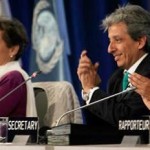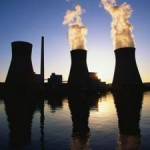Further Areas Where Progress is Expected in Lima
Accelerating ratification of the Doha Amendment to the Kyoto Protocol
- Countries that are Party to the Kyoto Protocol have a further opportunity to contribute to ambitious emissions reductions before 2020.
- The Doha Amendment to the Kyoto Protocol needs to be ratified by countries before it can enter into force. The ratification process needs to be accelerated and clear accounting rules adopted in Lima so that the amendment enters into force by the Paris meeting.
Providing transparency of developed country action
- The first round of the newly established “multilateral assessment” of developed country action to curb emissions will take place in Lima, with 17 countries assessed.
Building resilience to climate change
- As climate change impacts worsen and impact the poor and most vulnerable, governments urgently need to scale up adaptation to climate change. The conference needs to agree on how National Adaptation Plans of developing countries will be funded and turned into reality on the ground.
- Countries will also work to agree a work programme for the Executive Committee of the Warsaw International Mechanism for Loss and Damage, and elect the members of its Executive Committee.
Financing the response to climate change
- Governments will work to scale up and coordinate the delivery of climate finance and of the various existing funds. A focus will be on identifying ways to accelerate finance for adaptation to climate change.
- Governments will also recognize the initial capitalization of the Green Climate Fund, which is expected to reach US $ 10 billion by the close of the Lima conference.
Forests
- Countries meeting in Lima will further work to provide support to avoid deforestation. Several developing countries are expected to submit information which would make it possible for them to obtain funding for forest protection.
Providing technology to developing countries
- The Lima meeting is expected to fully operationalize the Technology Mechanism, especially the Climate Technology Centre and Network.
Fostering carbon markets
- Governments meeting in Lima are expected to clarify the role of carbon markets in the 2015 global agreement and set a work programme for next year to design and operationalize new carbon market mechanisms.
Other Highlights in Lima
UNFCCC Pre-2020 Action Fair
As part of the efforts by countries to accelerate pre-2020 climate action, the Secretariat is organizing a fair on December 5, 8 and 9 in Lima to showcase how action is being scaled up and how many countries and non-state actors are taking action and setting an example. It will be complemented by an exhibition that will run for the duration of the conference.
UNFCCC NAMA Day
A special whole day event will take place on December 6 on developing countries’ actions to reduce emissions with the help of so-called “nationally appropriate mitigation actions” (NAMAs). NAMAs are plans of developing countries to reduce emissions and to develop sustainably which can be supported by developed countries. The UNFCCC Secretariat has created a registry to match requests for and offers of support.
For more information, visit:
http://newsroom.unfccc.int/lima/
Source: UNFCCC.
About the UNFCCC
With 196 Parties, the United Nations Framework Convention on Climate Change (UNFCCC) is an international environmental treaty, which has near universal membership and is the parent treaty of the 1997 Kyoto Protocol. The Kyoto Protocol has been ratified by 192 of the UNFCCC Parties. For the first commitment period of the Kyoto Protocol, 37 States, consisting of highly industrialized countries and countries undergoing the process of transition to a market economy, have legally binding emission limitation and reduction commitments. In Doha in 2012, the Conference of the Parties serving as the meeting of the Parties to the Kyoto Protocol adopted an amendment to the Kyoto Protocol, which establishes the second commitment period under the Protocol. The ultimate objective of both treaties is to stabilize greenhouse gas concentrations in the atmosphere at a level that will prevent dangerous human interference with the climate system.















